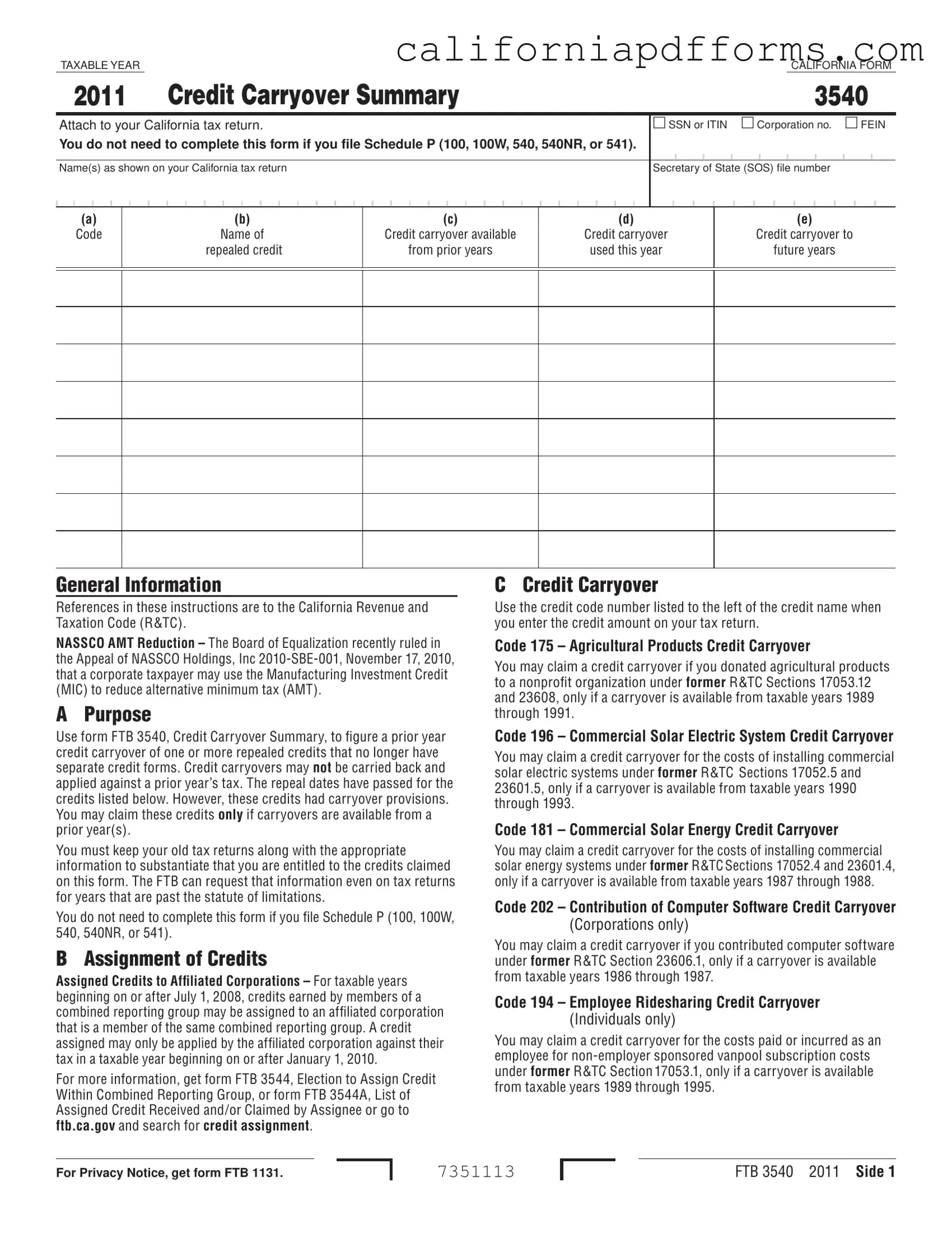The California 3540 form, known as the Credit Carryover Summary, is used to calculate and report credit carryovers from prior years for certain repealed tax credits. Taxpayers can utilize this form to claim credits that are no longer available on separate forms but still have carryover provisions. It is important to note that these credits cannot be carried back to previous tax years.
You must complete the California 3540 form if you have credit carryovers from prior years and do not file Schedule P (100, 100W, 540, 540NR, or 541). This form is specifically designed for taxpayers who wish to claim repealed credits that still have available carryovers.
The form requires several key pieces of information:
-
Your Social Security Number (SSN) or Individual Taxpayer Identification Number (ITIN).
-
Your corporation number or Federal Employer Identification Number (FEIN), if applicable.
-
The name(s) as shown on your California tax return.
-
The Secretary of State (SOS) file number.
Additionally, you will need to provide details about the specific credits you are claiming, including the credit code, name of the repealed credit, carryover amounts from prior years, and amounts used this year.
The California 3540 form allows you to report various types of repealed credits. Some examples include:
-
Agricultural Products Credit
-
Commercial Solar Electric System Credit
-
Employee Ridesharing Credit
-
Energy Conservation Credit
-
Low-Emission Vehicles Credit
Each credit has specific eligibility criteria and carryover provisions, so it is essential to review the details for each one.
Yes, there are limitations. Generally, a credit carryover cannot reduce certain taxes, including the minimum franchise tax and the annual tax for various business entities. Additionally, while some credits can reduce the alternative minimum tax (AMT), others cannot. Each credit may have its own specific limitations, so it is crucial to consult the instructions for detailed information.
In most cases, credit carryovers can be carried forward for up to eight years from the year the credit was incurred. However, some credits may have different carryover periods. For example, certain credits can be carried forward for up to ten years if the taxpayer qualifies as a small business. Always check the specific provisions for each credit to determine the applicable carryover period.
What should I do if I have unused credit carryover amounts?
If your available credit carryover exceeds your current year tax, any unused amount can be carried over to future years. However, this can only occur if the carryover period has not expired. It is advisable to apply the carryover to the earliest taxable years possible.
What happens if I do not keep my old tax returns?
It is essential to retain your old tax returns and any supporting documentation related to the credits you claim. The California Franchise Tax Board (FTB) may request this information, even for years that are past the statute of limitations. Failing to provide this documentation could jeopardize your ability to claim the credits.
